There's something enchanting going on in balconies and home gardens. Derived from Celtic lore, fairies are worth charming because if you’re nice to them, they’ll bring you good luck, health and prosperity.
And how does one do that? The secret – a welcoming, peaceful setting, complete with a little house and ample places to play and sit. Fairy gardens are miniature gardens constructed of miniature plants and tiny accessories designed to lure fairies. They can be outside gardens with in-ground plants, or they can be mini container gardens intended mainly for apartment balconies and patios.
Every fairy garden is extremely personalised and has a unique character of its own. Maybe it’s the fantasy-folklore lover coming out in us, but whatever the reason, fairy gardens have become one of the hottest trends lately. They are filled with magic – fairy worlds you can create with in your spare time or with your kids in any space you have. If you feel confused by all the options floating around Pinterest, here is our ultimate guide to building your own fairy garden.
Types Of Fair Gardens
Outdoor Fairy Garden

Outdoor fairy gardens are the centre piece of your garden, balcony, or patio. The size solely depends on your style. But remember to maintain the sole purpose of it being relatively small and inviting, so you may want to choose a cosy corner that is not too out of sight.
Indoor Fairy Garden
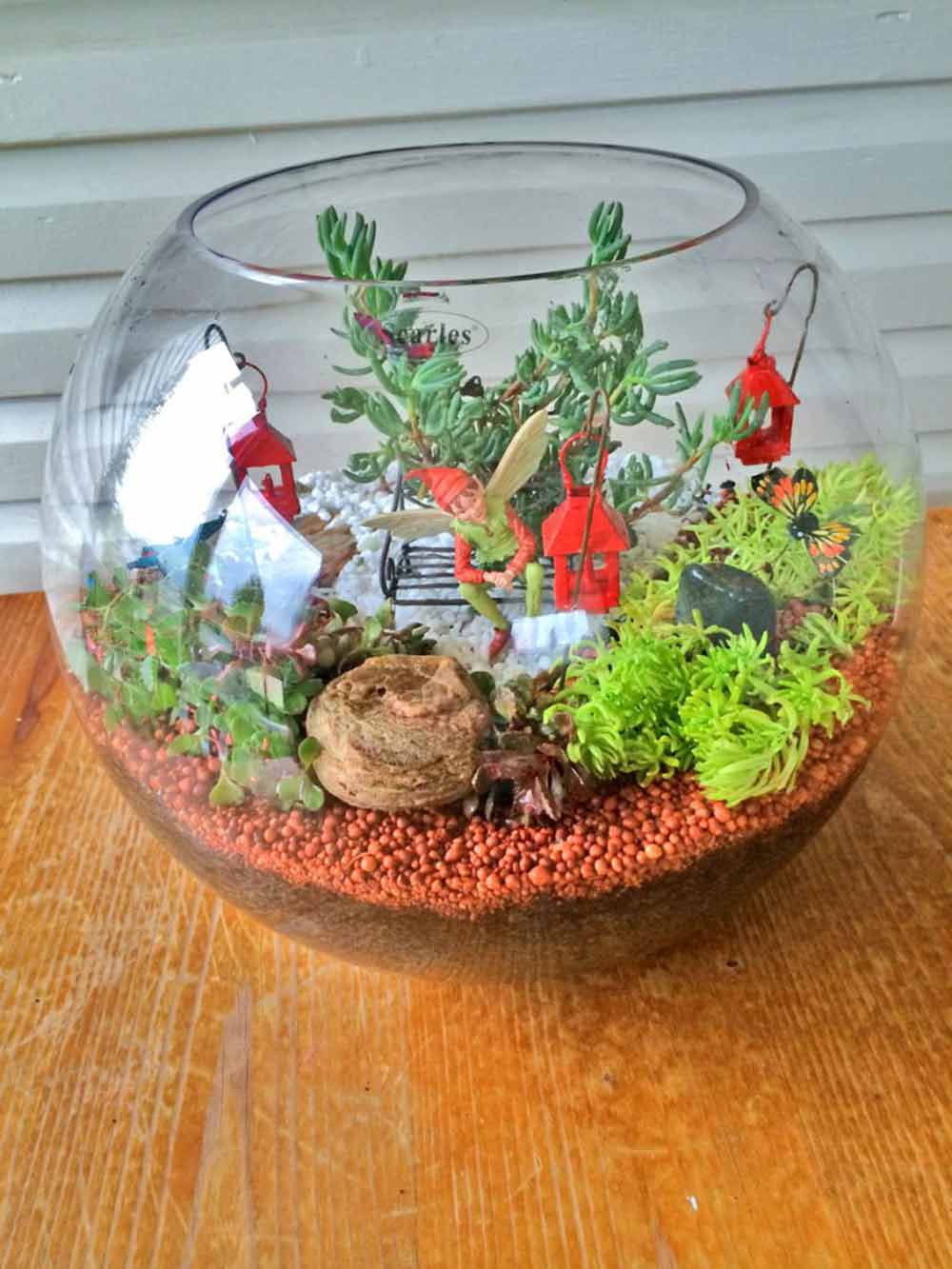
Fairy gardens built in any confined – think large mugs, a cute little painted tin tub or a glass vase, their dimensions can vary. Remember to pick a spot that is well lit and recieves enough sunshine or grow light.
Where do you start?
One of the many wonderful things about fairy gardens is that you can start small and build up over time.
#1 Pick Your Spot
If you have the luxury of a garden space, we would suggest picking a spot that is hidden but in an obvious way – corner of large bush or a shrub and not in direct sunlight. If you have a balcony – you can build a container fairy garden which can be easily placed in the outdoors. If you are someone who wants to start small or don’t have the space for an elaborate fair garden, you can opt for fairy gardens built in large mugs or a small tin box. This can be placed anywhere in the house that receives fair amount of sunlight.
#2 Chose a container
The next step is choosing a container, and whether it will be a tree trunk, teacup, basket, flower bed or flower pot. Make sure you dig drainage holes in them.
#3 Building A Solid Base
Soil is a must when it comes to making a fairy garden. It is to act as the base to the plants you decide to use. You may also include pebbles, wooden artefacts, and metallic relics.
#4 The Foliage
Succulents in a fairy garden are a must-have. Limit your choices to tiny plants such as succulents, cacti, and mosses. You should construct your garden to look as realistic as possible – add a cluster of Jade plants or use Lithops that look like flat-topped pebbles or rocks to represent stones.
#5 Building A Home
Start with a door, every fairy garden needs a gateway into said fairy's home. Place miniature objetcs like bridges, castles, huts, well, roads, etc. Add a mini pond, they are meant to make the scene appear as realistic as possible.
#6 Accessories Are Everything
Super fun additions in your fairy garden are little dolls and small objects like a well, stairs, a pathway, signage, a wishing well, fence, seats, gardening accessories , etc. Dolls may include fairies, gnomes, birds, and animals. These tiny relics add character to your fairy garden.
Choosing The Best Succulents For Fairy Garden

Plant succulents that are small and ones that flourish when grown with other species as well. The herbs you can use are rosemary or pine needle-shaped leaves of Oregano for their extensive ground coverage. You may use flowering plants such as the Foxgloves, Bluebells, and Violets to give your fairy garden an array of brilliant bright colours.
How to Assemble Your Fairy Garden
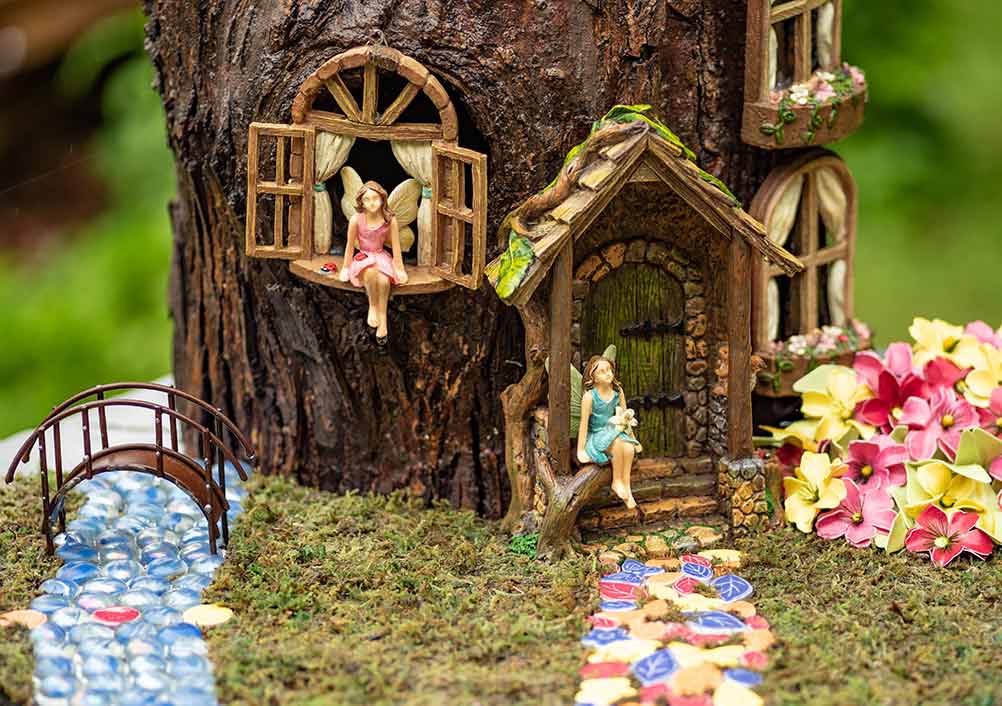
• Fill the container with succulent soil.
• Start planning out where you want all of your plants, accessories, and pathways to go.
• Place the largest objects like cottages and patio furniture in the fairy garden first, and then work on smaller accessories and plants around them.
• Let your imagination guide you while placing the accessories.
• Once you’re happy with the way that your layout looks, you can start planting your succulents in the soil. Do not overcrowd while planting.
• Now you can create pathways between them using pebbles and moss.
• Add your final touches like dolls and some fairy dust!
• Your succulent fairy garden is complete. Now you can sit back and enjoy it!
Maintaining Your Fairy Garden
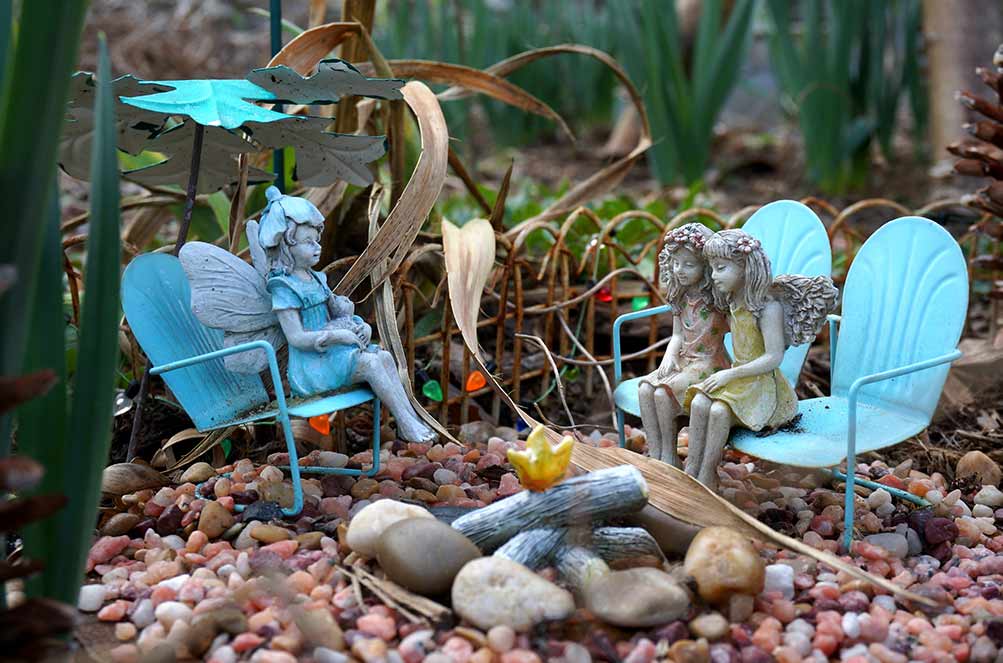
• Succulents need to be watered about once every week or two.
• If the soil getting dry, soak the soil thoroughly with, until water starts to run out of the drainage holes.
• Make sure the leaves dont rtain moisture.
• Allow the succulent soil to drain and completely dry out before you water it again
• Prune the succulents to control their size.
Fairy Garden Inspiration and Designs
1) Tiered Flower Pot Fairy Garden

2) Stone Cottage
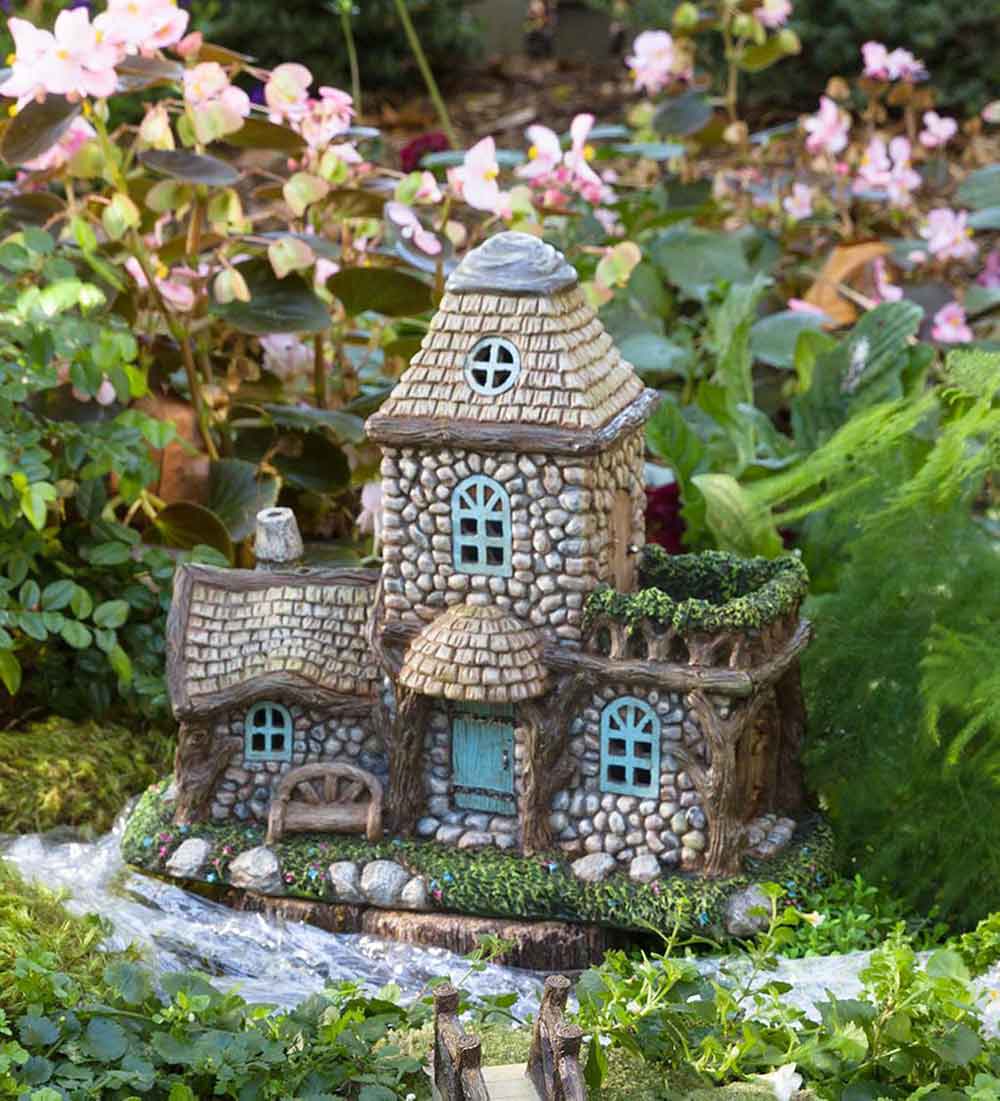
3) Teacup Fairy Garden

4) Wicker Basket Garden

5) Hobbit House Fairy Garden
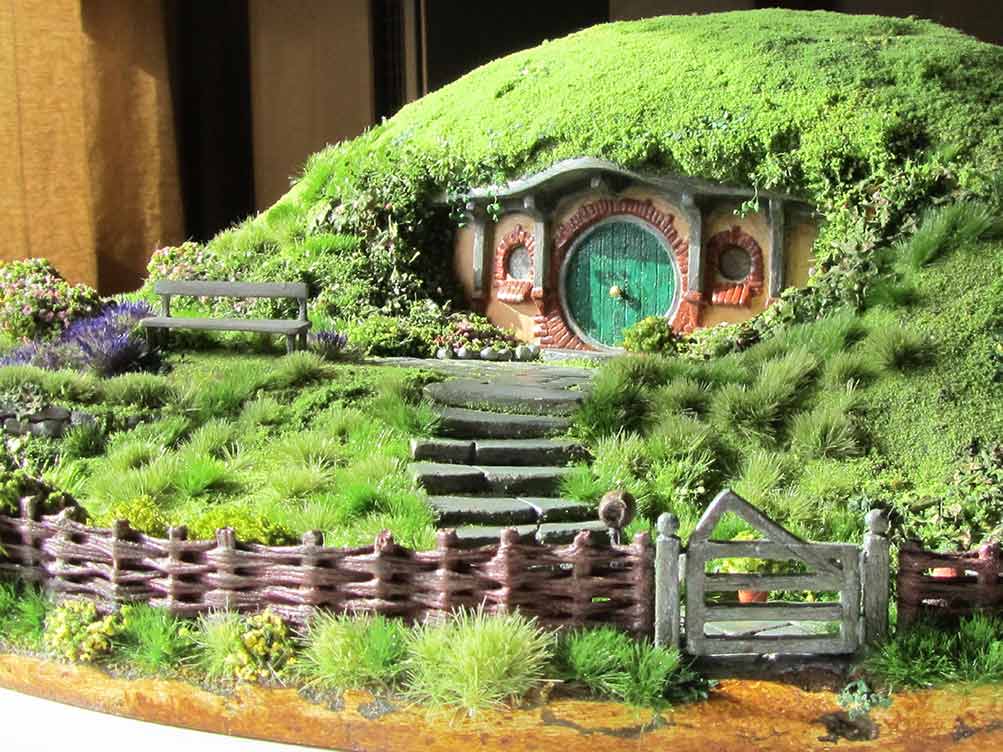
6) Magical Fairy House Planter
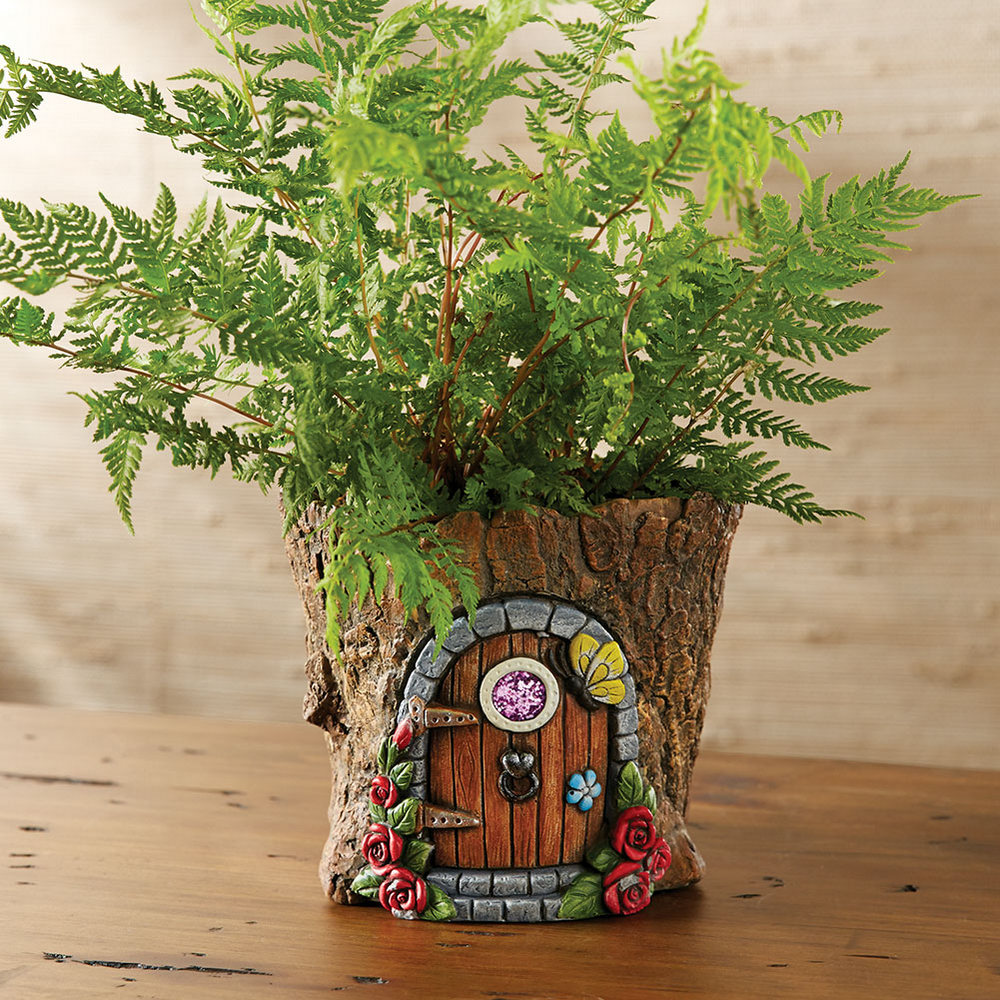
7) Tiered Terra Cotta Fairy Garden
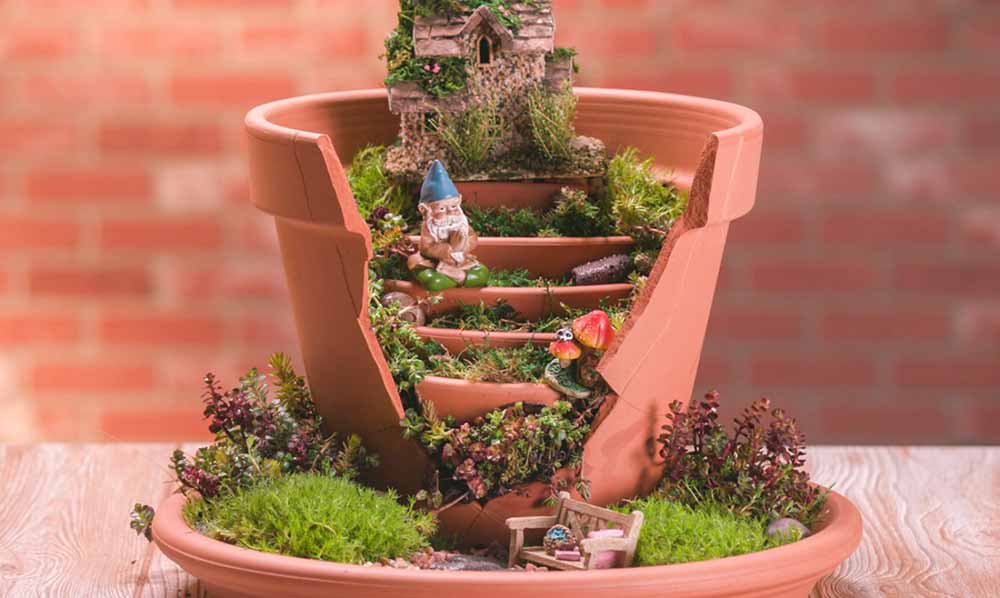
8) Classic Fairy Garden
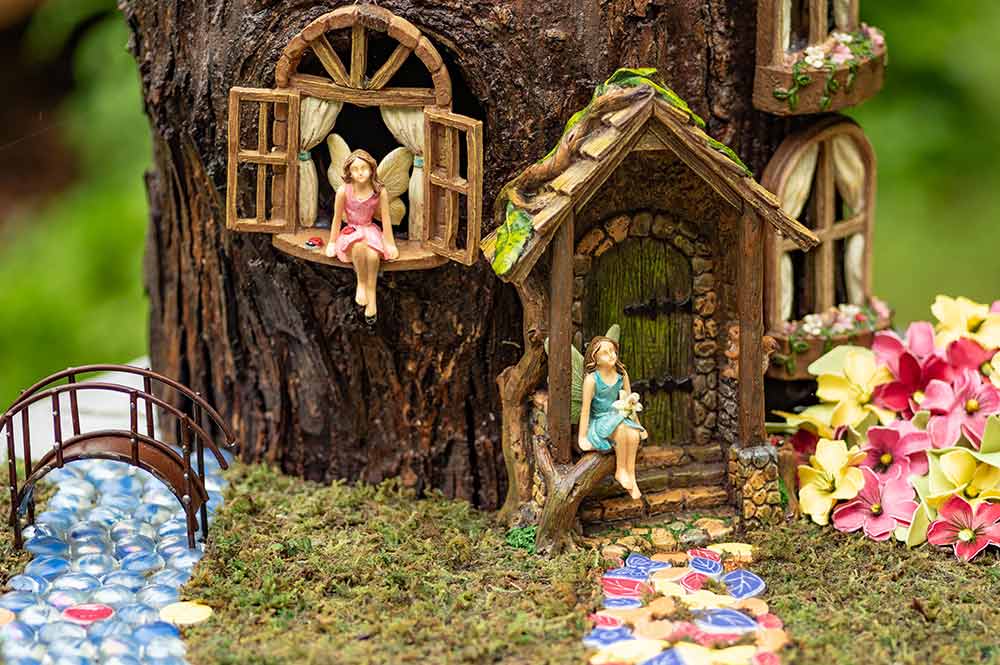
9) Seed Package Fairy House
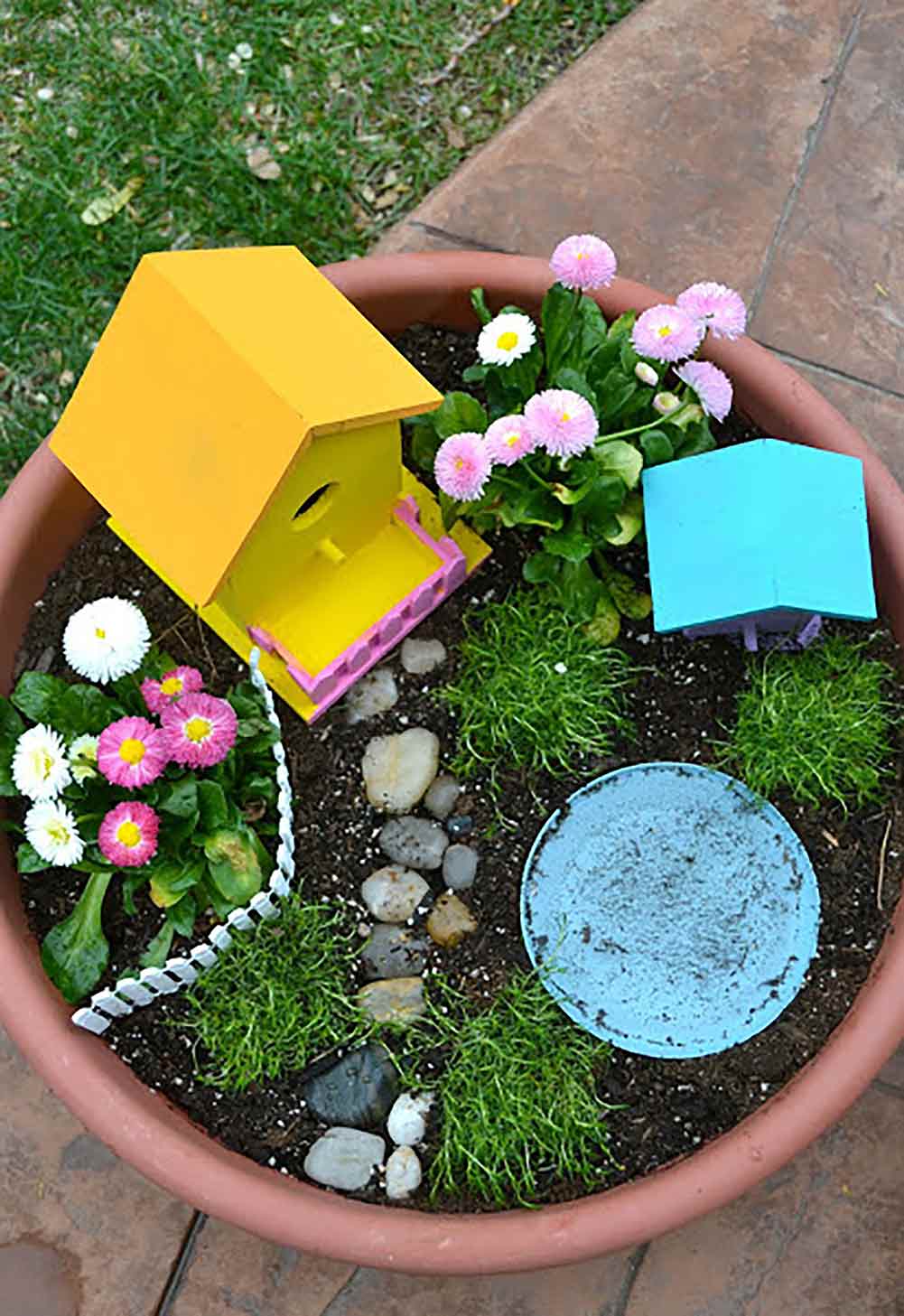
10) Wooden Box Garden
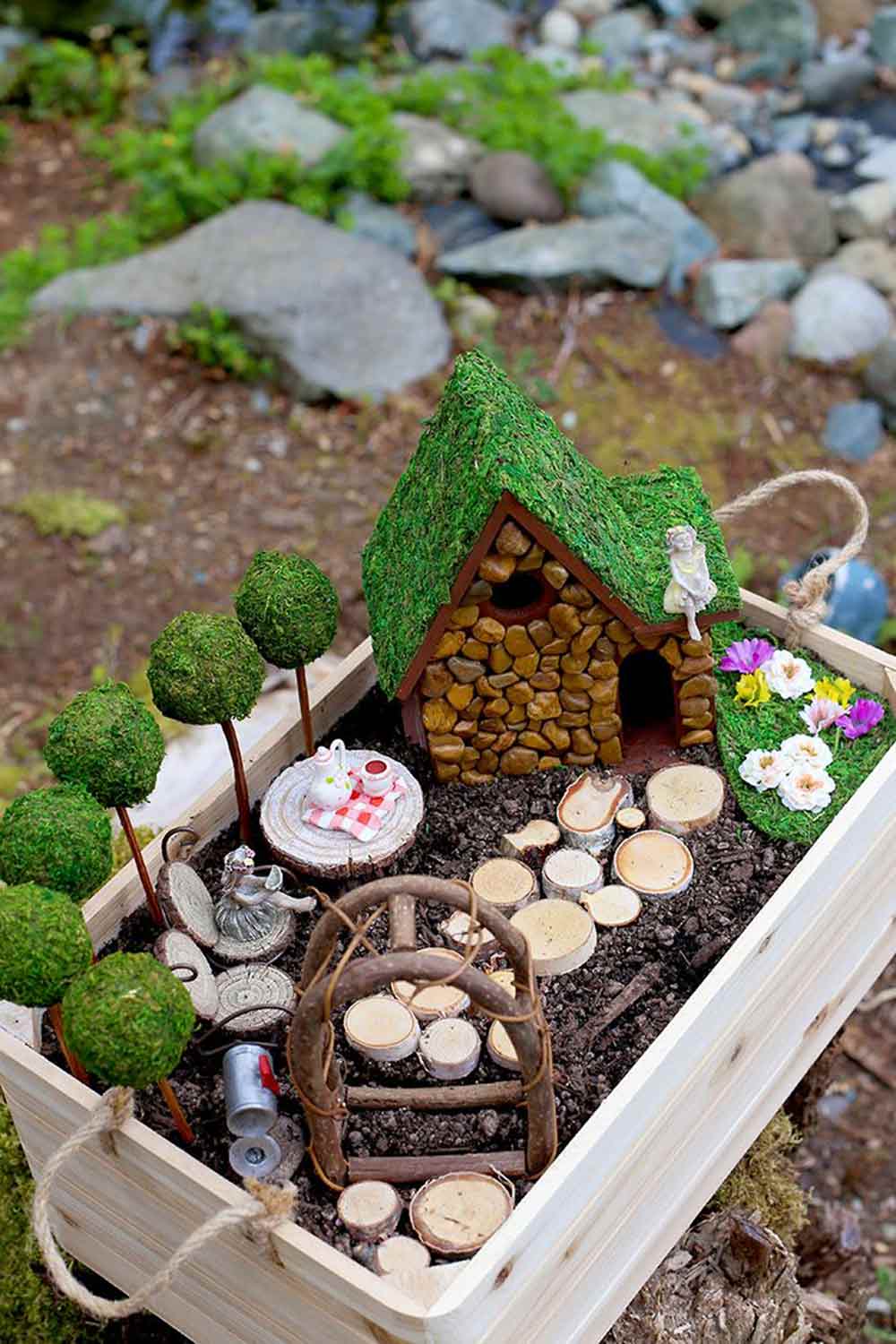
FAQs
Where Can I Buy Miniature Garden Plants?
Check with your local independent nursery or you can also order from Nursery Live or MyBageecha
Indoor Vs. Outdoors, What Would You Recommend And Which Is Easier To Maintain?
1) An indoor fairy garden lets you control the temperature, water, and sunlight that affect your garden.
2) Indoor fairy gardens bring a bit of the natural world into your interior environment.